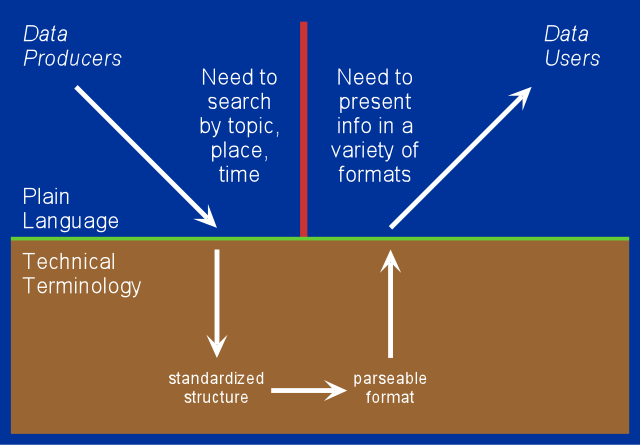
|
Ideally, data producers and users would communicate in plain language. However two factors argue for a more systematic structure and format for metadata: the need to search metadata records by topic, place, and time, and the need to re-express or present the metadata in a variety of formats appropriate to the user's environment. Consequently formal metadata is written with a prescribed structure. For example you will have only one publication date for each citable data source, but you may describe as many data sources and processing steps as you need to explain how the data were developed. Likewise, formal metadata are written in a format that can be parsed (interpreted) by computer software, typically as a well-specified text outline or as XML using a specified document type definition.